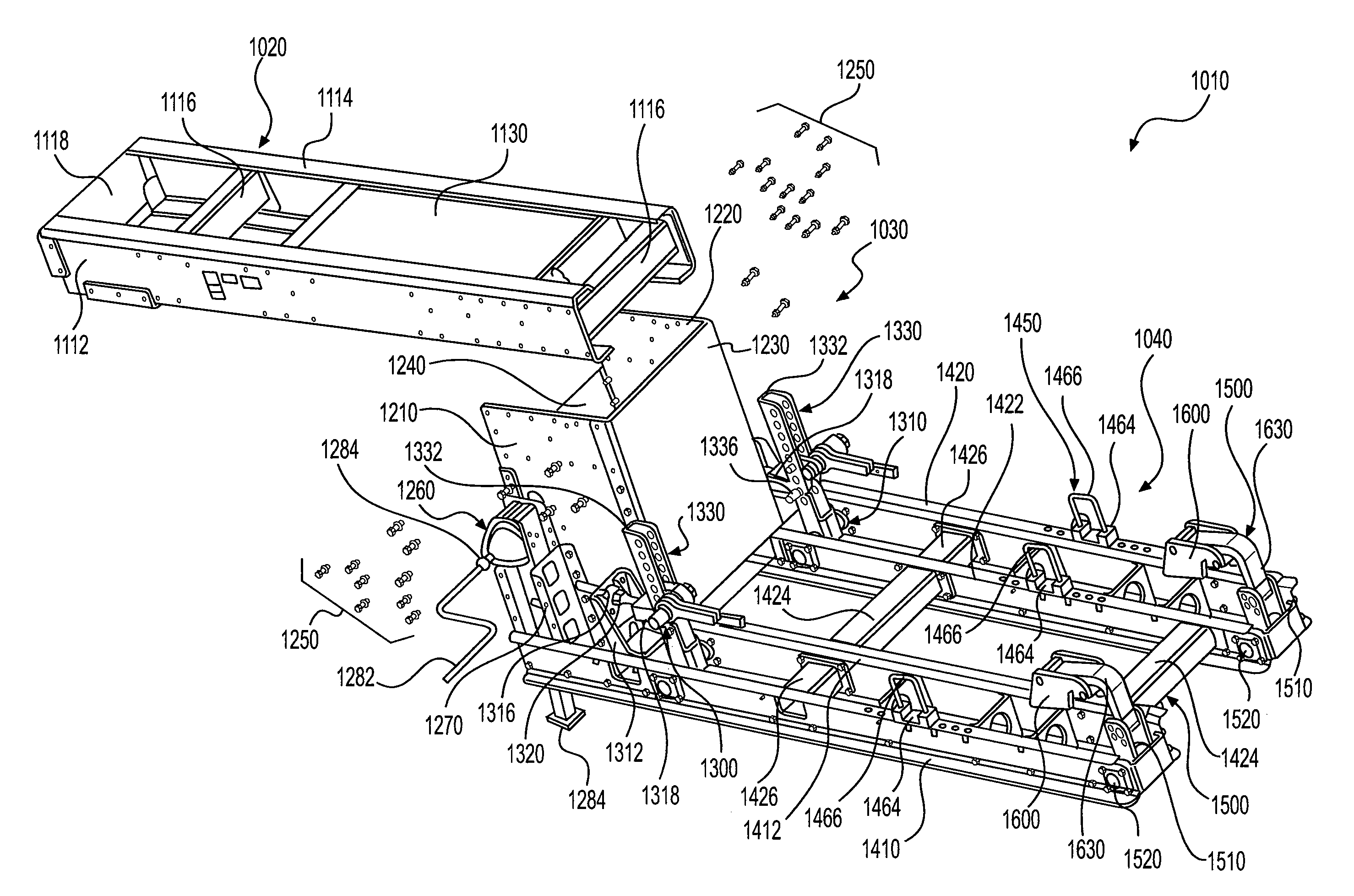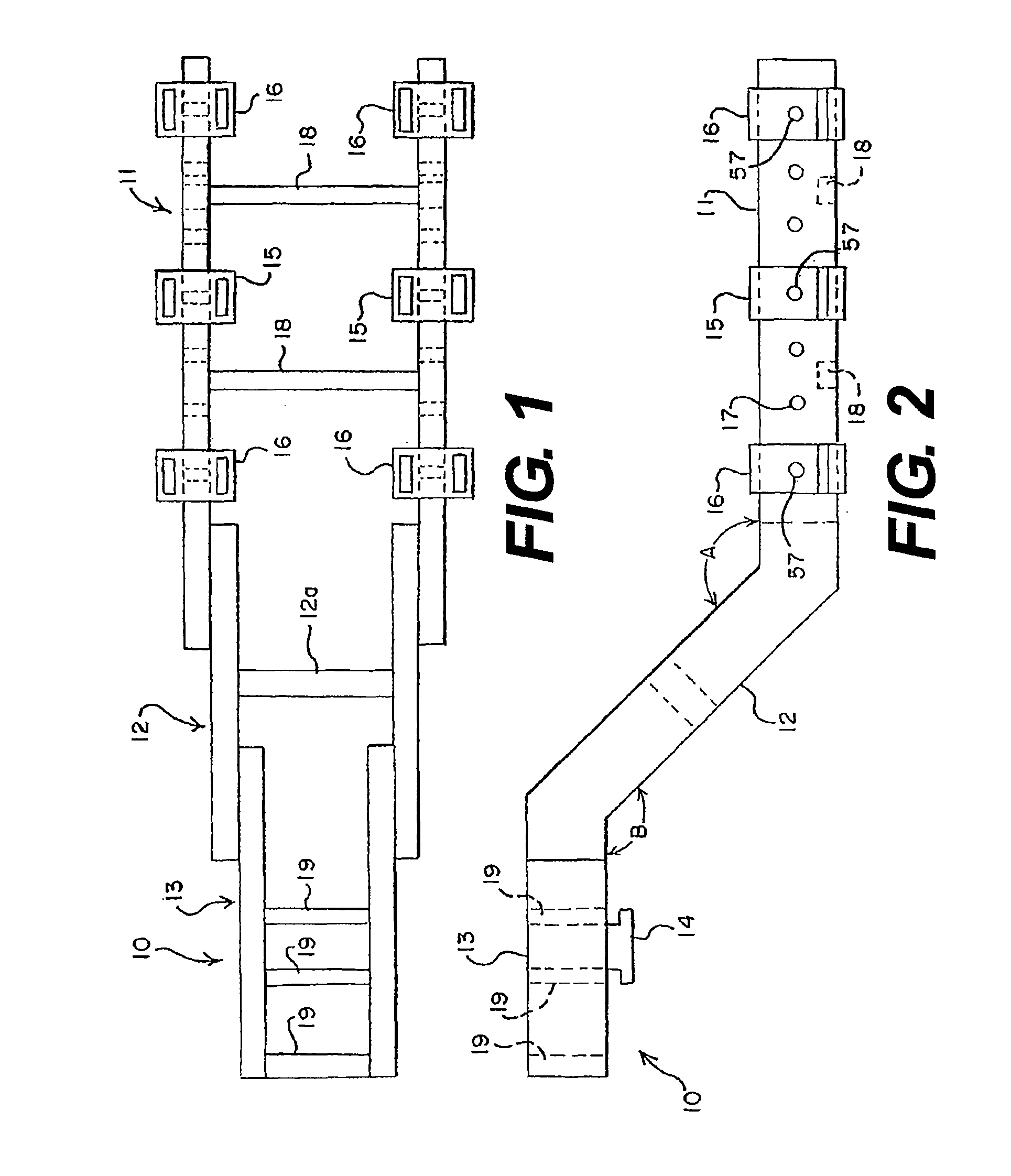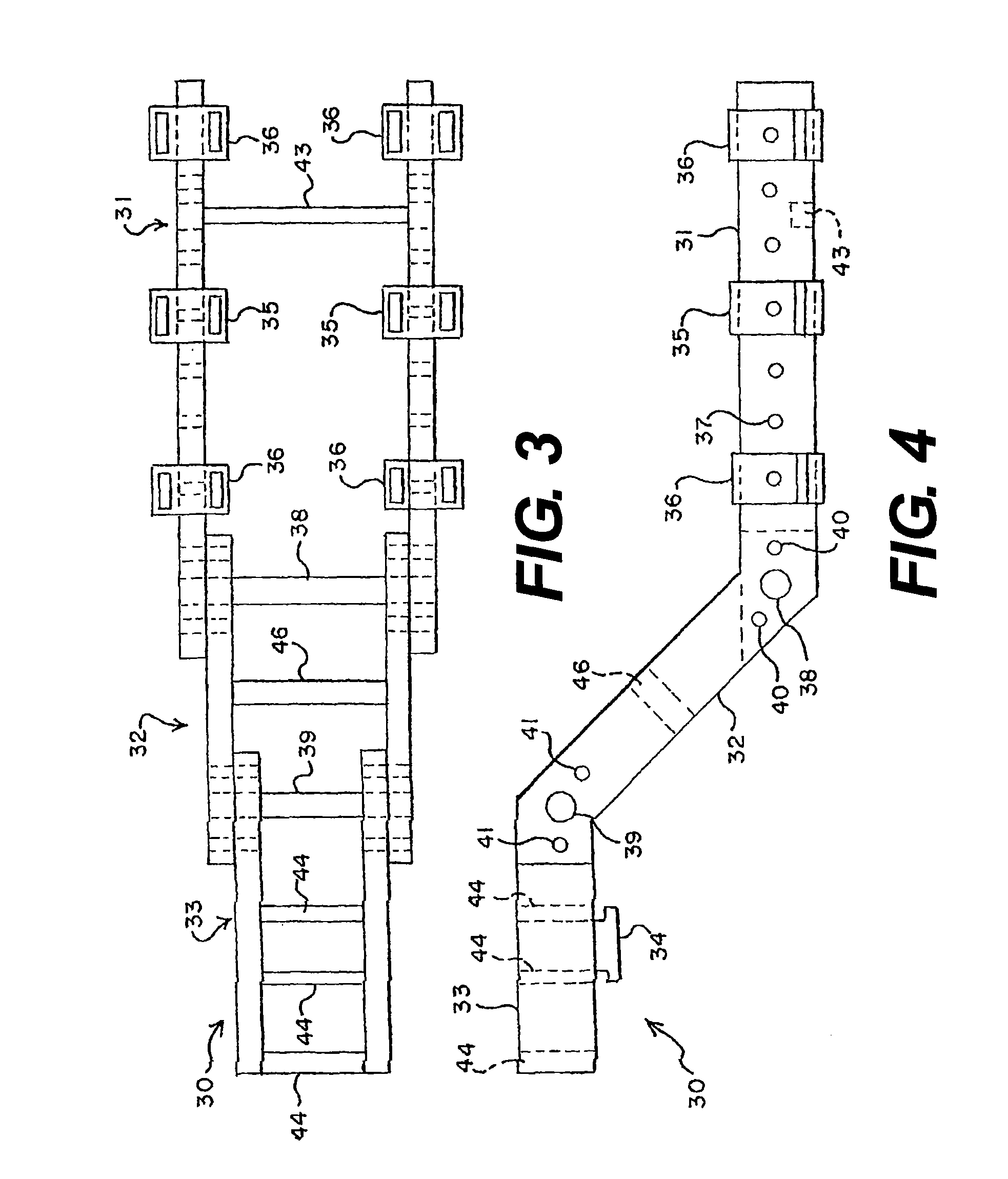Front tow extended saddle
a front tow and extended technology, applied in the field of front tow extended saddles, can solve the problems of adding additional costs to the delivery of the truck, putting the combination load at risk of violating a vertical height limit, and affecting so as to maintain the cleanliness of the towed vehicle
- Summary
- Abstract
- Description
- Claims
- Application Information
AI Technical Summary
Benefits of technology
Problems solved by technology
Method used
Image
Examples
Embodiment Construction
[0097]The front tow extended saddle is highly useful in transporting trucks and other vehicles, including new trucks, from one location to another. While aspects are most useful for this application, they may also be used to transport other vehicles, such as cars or trucks, from one location to another.
[0098]The front tow extended saddle is aimed at safe and economical delivery of vehicles. Accordingly, vehicles towed with the front tow extended saddle face forward, in their normal direction of travel. In this way, there are no additional side loads or wind loads placed on the vehicles. For instance, many highway class 7 and class 8 vehicle have very large aerodynamic cab features, e.g., large fairings designed to deflect the winds encountered in high speed driving. When a truck with these large surface features is towed while facing rear-ward, the beneficial effect of these features is lost. Instead, the aerodynamic features may almost be said to act as a thrust-reverser, since the...
PUM
 Login to View More
Login to View More Abstract
Description
Claims
Application Information
 Login to View More
Login to View More - R&D
- Intellectual Property
- Life Sciences
- Materials
- Tech Scout
- Unparalleled Data Quality
- Higher Quality Content
- 60% Fewer Hallucinations
Browse by: Latest US Patents, China's latest patents, Technical Efficacy Thesaurus, Application Domain, Technology Topic, Popular Technical Reports.
© 2025 PatSnap. All rights reserved.Legal|Privacy policy|Modern Slavery Act Transparency Statement|Sitemap|About US| Contact US: help@patsnap.com



